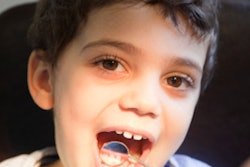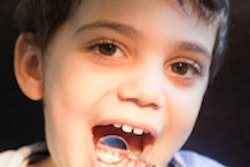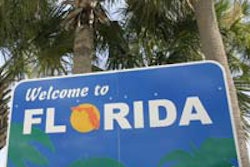
Children in states with higher Medicaid reimbursements got more dental care than those in states with lower payment rates between 2000 and 2008, but children covered by Medicaid received dental care less often than children with private insurance, according to a new study in the Journal of the American Medical Association (JAMA, July 13, 2011, Vol. 306:2, pp. 187-193).
Between 2000 and 2008, children covered by Medicaid were less likely (55%) than children with private insurance (68%) to have seen a dentist in the past six months, but were more than twice as likely to have seen a dentist than children without insurance (27%), according to study author Sandra Decker, PhD, a researcher with the National Center for Health Statistics at the U.S. Centers for Disease Control and Prevention.
The JAMA study compared Medicaid reimbursements for dental care for 42 states plus the District of Columbia, merging it with data from 33,657 children and adolescents (2-17 years old) in the National Health Interview Survey for the years 2000-2001 and 2008-2009. The study measured whether a child had had a prophylaxis in the past six months, comparing children covered by Medicaid, uninsured children, and children with private insurance.
In the states that raised Medicaid reimbursements for dental care during the period -- even by a small amount -- more children were able to get oral care.
"Changes in state Medicaid dental payment fees between 2000 and 2008 were positively associated with use of dental care among children and adolescents covered by Medicaid," Decker wrote. "For example, a $10 increase in the Medicaid prophylaxis payment level (from $20 to $30) was associated with a 3.92 percentage point increase in the chance that a child or adolescent covered by Medicaid had seen a dentist."
"Just a $10 increase had such an impact," Decker told DrBicuspid.com, noting that the difference represented a large percentage in the number of children who were able to access oral care.
In 2008, the Medicaid payment for prophylaxis varied widely from state to state, from a low of less than $20 in New Jersey, Florida, Minnesota, Missouri, and Michigan to a high of more than $45 in Alaska, Kentucky, District of Columbia, Connecticut, and Arizona, Decker found.
"Children covered by Medicaid or CHIP [Children's Health Insurance Program] who lived in states that paid $20 were less likely to have seen a dentist than children with private insurance," she wrote. "Children in states that paid $30, however, were no longer statistically significantly less likely than children with private insurance to have seen a dentist."
Some states get the message
On average, Medicaid dental payment levels did not change significantly in inflation-adjusted terms between 2000 and 2008, although in five states, plus the District of Columbia, payments increased at least 50%, according to the Decker.
In fact, 2008 Medicaid reimbursements were actually lower than the (inflation-adjusted) 2000 fees in 23 of the 42 states plus the District of Columbia considered in the analysis. Payment levels to dentists in 2008 were higher than in 2000 in 19 states plus the District of Columbia. In five states (Connecticut, Indiana, Montana, New York, and Texas) plus the District of Columbia, payments increased by at least 50% between 2000 and 2008.
“Just a $10 increase had such an impact.”
— Sandra Decker, PhD, Centers for
Disease Control and Prevention
"The states seem to have gotten the message that fees matter, and quite a few states substantially increased fees between 2000 and 2008," Decker told DrBicuspid.com. "And it did have a positive impact on utilization."
More than one-third of the nation's children are covered by public health insurance, primarily Medicaid and CHIP. Dental care for children is covered by Medicaid and CHIP, and states are required to provide it, although states have wide latitude in setting payment rates for providers, and these rates vary greatly by state.
Medicaid recipients may not be able to access dental care if dentists decline to accept it, Decker noted, usually because of low reimbursements, burdensome paperwork not required by other insurers, or high no-show patient rates.
The report had some other good news: Children were about 6% more likely to have seen a dentist in 2008-2009 than in 2000-2001. And the percentage of children covered by Medicaid or CHIP and private insurance who had seen a dentist in the past six months increased between 2000- 2001 and 2008-2009, Decker reported.
In 2000, 13,459 children and adolescents were covered by private insurance, but the number dropped to 8,716 in 2008. The number of children who were covered by Medicaid or CHIP rose from 3,464 in 2000 to 3,845 in 2008, but the number of children who had no insurance coverage declined from 2,579 in 2000 to 1,594 in 2008.
In 2008-2009, about 26% of the children were covered by Medicaid, compared with about 65% who had private insurance and about 10% who were uninsured. About 13% were non-Hispanic black, nearly 22% Hispanic, and about 16% had family incomes below the federal poverty level. In addition, older children (7-17 years old) and girls were more likely to have seen a dentist in the past six months than boys and children ages 2 to 6 years, Decker found.
Poorer children were less likely to have seen a dentist. Those covered by Medicaid or CHIP were about 13% less likely to have seen a dentist than children with private insurance, and uninsured children were about 40% less likely to have seen a dentist, according to the report.
Medicaid coverage not a guarantee
But the report also noted that not all children with private health insurance have dental insurance. In fact, the 2008-2009 data indicate that only about 77% of children covered by private health insurance had dental insurance.
"Children covered by Medicaid use dental care less frequently than children with private insurance," Decker concluded, "but the frequency of children covered by Medicaid receiving dental care is associated with each state's provider payment policy for dental care."
Medicaid spent $3.2 billion on dental care in 2007, which should have helped address oral health problems of low-income individuals, according to Decker.
"As the share of children and adolescents covered by Medicaid has increased -- from 16% in 2000-2001 to 26% in 2008-2009 -- the share of low-income children with dental insurance should also have increased," she wrote. "However, providing children with Medicaid coverage does not cause them to see a dentist as frequently as privately insured children, even though Medicaid coverage for dental care for children is likely to be more comprehensive than at least some private dental insurance plans."
With most states facing large budget deficits, many are considering cutting reimbursements to Medicaid and CHIP.
"As future expansions in Medicaid eligibility and insurance coverage more generally are contemplated and possibly implemented, more attention to the effects of provider payment policies on access to care, quality of care, and health outcomes may be warranted," Decker noted.
A 2010 survey by the Kaiser Family Foundation and Health Management Associates showed that more states (37) are considering changes in provider payment rates to contain costs than any other health policy, including pharmacy controls (30), benefit reductions (14), patient co-pays (5), and eligibility cuts (1).
Although the federal government requires that Medicaid provider payment rates be "sufficient to enlist enough providers so that care and services are available," this requirement generally has not been enforced, Decker noted. "Although the federal government has always strongly influenced state Medicaid and CHIP eligibility rules and services covered throughout the history of the programs, it has intervened much less in provider payment policies," she wrote.
"States do have to monitor utilization, and if they lower fees, they have to show it will have no impact on utilization and plan to address it through other means if it does," Decker told DrBicuspid.com.
However, the recently approved Patient Protection and Affordable Care Act calls for increasing Medicaid fees for some primary care services performed by primary care physicians to Medicare levels for 2013-2014.
"This legislation is evidence of newly increased attention to the issue of provider payment rates under Medicaid," Decker pointed out, "even though there has as yet been no policy initiative aimed at dental care."
When Illinois raised its Medicaid reimbursement rates several years ago, school-based programs for uninsured children became self-sustaining there, according to Joe Donohue, associate director for Oral Health America (OHA).
"We certainly support an increase in Medicaid funding with the hope that state plans will truly enable more children and vulnerable adults to obtain the access they deserve," he told DrBicuspid.com.
There has been a noticeable increase in grant applications since 2004 as the economy has taken a downturn, Donohue added. "We have been providing more grants to more people and have gotten more requests," he said.
Thanks to grants from Trident and product donations, OHA's Smiles Across America program has been able to provide more than $1.8 million in grant funding and has donated millions of units of dental product to over 900 nonprofit dental providers, he noted, adding that when this group donates $2,000 worth of fluoride varnish, dental providers can leverage their resources and see many more children.
"A little goes a very long way with public health dentistry," he said.



















